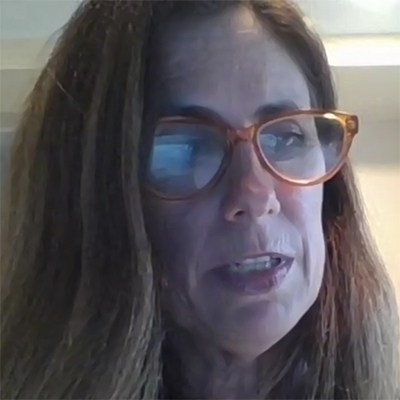
The Renewable Energy Buyers Alliance (REBA) reports exponential growth of corporate-scale renewable energy deals in recent years, and the World Resources Institute says the number of public-private power purchase agreements by local government have doubled since 2015.

While many cities have made significant progress in procuring renewable electricity to meet their own municipal demand and achieve their communitywide renewable goals, partnerships with anchor corporate community members are going to be critical, said Holly Elwood, senior adviser to EPA’s Environmentally Preferable Purchasing Program, which hosted a webinar Wednesday.
“Companies can’t stop at greening their own electricity use if they want to demonstrate climate leadership,” Elwood said.
Two key metrics to track progress in local government efforts are the number of deals in-house each year and the total number of megawatts that those deals amount to, said Tatsatom Gonçalves, energy research analyst with the World Resources Institute.
2020 was a record-breaking year, with 167 deals being announced, about double the amount of five years earlier. The energy total of 4 GW was three and a half times the amount from 2015, Gonçalves said.
Increasing Engagement

And with that growth comes increasing corporate and government engagement in stakeholder processes at RTOs/ISOs across the country, said Sarah Mihalecz, senior director of education and engagement with REBA.
“Customers haven’t necessarily been major players in the design around wholesale electricity markets in the past, but recognizing the importance of these markets to efficiently meet clean energy goals, we’re seeing both corporates and cities engaging more through letters and stakeholder workshops across the country, and we predict that that will continue to increase this year and beyond,” Mihalecz said.
REBA is focused on unlocking the marketplace for a zero-carbon future and aims to catalyze 60 GW of new corporate renewables on the grid by 2025, she said, referring to the organization’s recently updated State of the Market and Deal-Tracker reports.
Commercial real estate is responsible for 16% of emissions and 35% of electricity use in the U.S., so the sector’s involvement is key for a decarbonized future, which helps explain why corporations and municipalities find it useful to collaborate on clean energy programs, Mihalecz said.
Most cities and corporations begin their transition to renewable electricity by tackling internal operations first, only then beginning to look for ways to expand their impact, Elwood said.

For example, the city of Fayetteville, Ark., adopted its first energy action plan in 2018, but it soon realized that the 300-kW limit on commercial projects by the state’s Public Service Commission, and the lack of provisions for local governments to benefit from federal tax credits, meant the city needed to find allies to help it lobby in Little Rock, said Fayetteville Environmental Director Peter Nierengarten.
“As the 2019 legislative session began to approach, we started having conversations with several other organizations across the state, including Walmart, Unilever, Audubon Arkansas, the Arkansas County Judges Association, several of the solar companies and then multiple small businesses and nonprofits and other local governments,” Nierengarten said.

The groups used the Arkansas Advanced Energy Association as a convening organization to allow them to collaborate to figure out how to get some legislation passed, he said. They highlighted the disparity that Arkansas had between its No. 11 ranking in terms of solar potential and No. 31 ranking in installed solar. In trying to close that gap, they talked about the job creation potential in commitments from companies like Apple, Amazon, Facebook and, of course, Walmart.
A bipartisan bill passed with overwhelming support; the governor signed it into law in March 2019; and the results “have really been a tidal wave of new solar development in Arkansas, particularly in the nonprofit and government sectors,” Nierengarten said.
Cooperation between cities and corporations translates into the ability to get bigger resources and better economies of scale, said Steve Chriss, director of energy services at Walmart.

“For Walmart especially I think we’ve got good alignment with cities and other government entities around the need for resource procurement to be the lowest possible cost,” Chriss said. “They’ve got budgets and we’ve got budgets and targets we need to meet … [and] in the utility space, we have a lot of experience on procurement rates and regulatory, and we can use that to help drive opportunities forward.”
If anyone is going to try to sway energy regulation at their state utility commission, don’t forget about integrated resource planning, said Stacy Miller, sustainability program coordinator for the city of Minneapolis.
“Particularly large customers — cities with clean energy goals — have a lot at stake in the outcome of an integrated resource plan,” Miller said. “At least 40 states go through that process, so I would encourage you to look at it.”

Engaging in the regulatory process is definitely an exercise in patience and flexibility, Nierengarten said. “In my experience one of the biggest internal hurdles was with the finance department, so bringing them into the discussion early and bringing them along through the entire process and making sure they’re comfortable with the various steps was absolutely critical to our success.”
“This is hard and this is complicated,” said Michael Forrester, director of Cincinnati’s Office of Environment and Sustainability. “Your financial department, your lawyers and everyone are not going to know the answer, so ask the questions and just try to build trust and confidence that you will eventually get the answers.”

